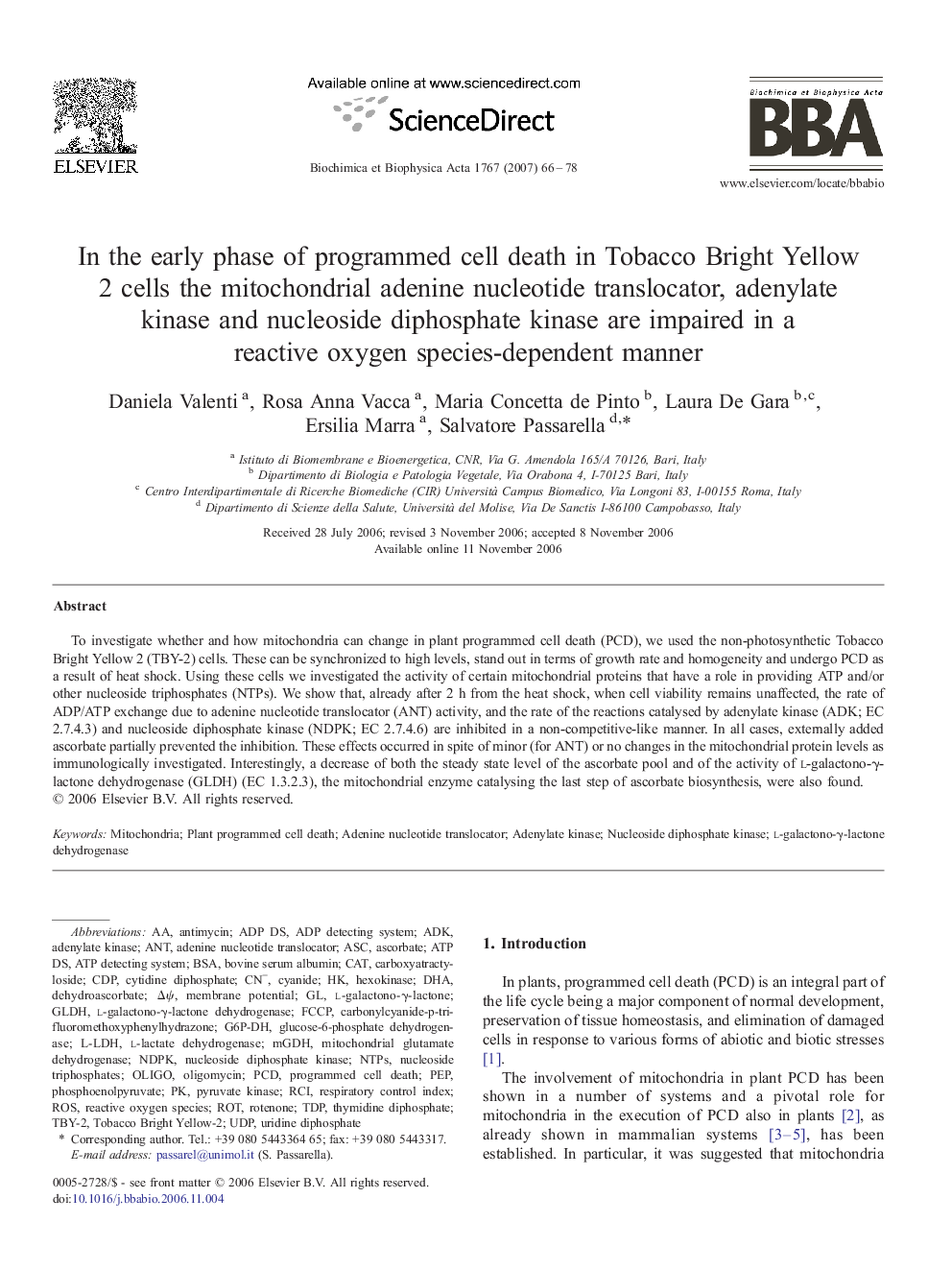| Article ID | Journal | Published Year | Pages | File Type |
|---|---|---|---|---|
| 1943641 | Biochimica et Biophysica Acta (BBA) - Bioenergetics | 2007 | 13 Pages |
To investigate whether and how mitochondria can change in plant programmed cell death (PCD), we used the non-photosynthetic Tobacco Bright Yellow 2 (TBY-2) cells. These can be synchronized to high levels, stand out in terms of growth rate and homogeneity and undergo PCD as a result of heat shock. Using these cells we investigated the activity of certain mitochondrial proteins that have a role in providing ATP and/or other nucleoside triphosphates (NTPs). We show that, already after 2 h from the heat shock, when cell viability remains unaffected, the rate of ADP/ATP exchange due to adenine nucleotide translocator (ANT) activity, and the rate of the reactions catalysed by adenylate kinase (ADK; EC 2.7.4.3) and nucleoside diphosphate kinase (NDPK; EC 2.7.4.6) are inhibited in a non-competitive-like manner. In all cases, externally added ascorbate partially prevented the inhibition. These effects occurred in spite of minor (for ANT) or no changes in the mitochondrial protein levels as immunologically investigated. Interestingly, a decrease of both the steady state level of the ascorbate pool and of the activity of l-galactono-γ-lactone dehydrogenase (GLDH) (EC 1.3.2.3), the mitochondrial enzyme catalysing the last step of ascorbate biosynthesis, were also found.
